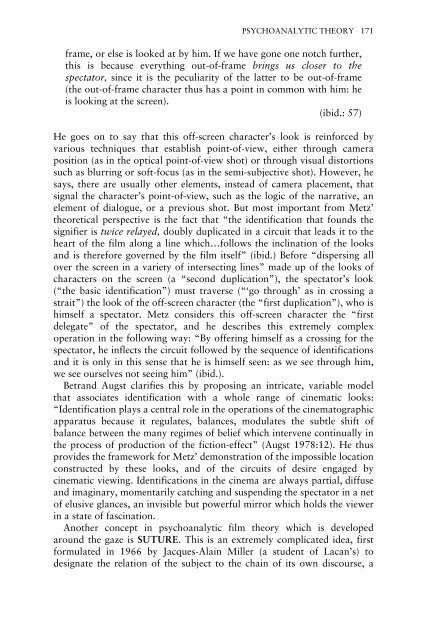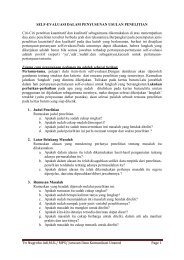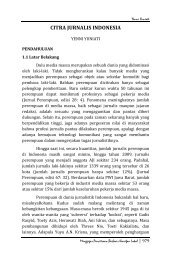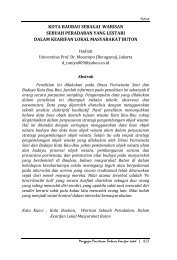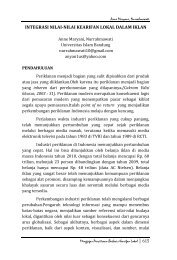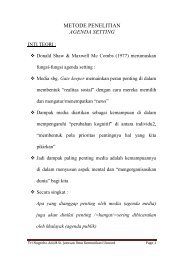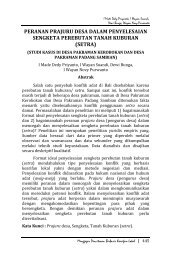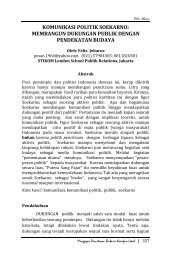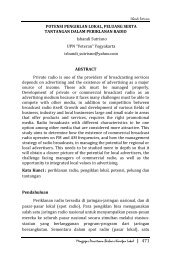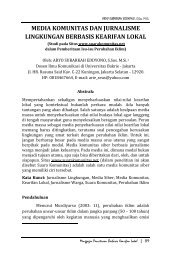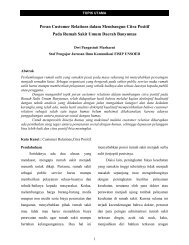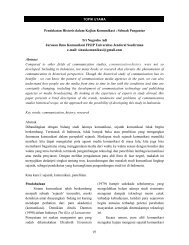New Vocabularies in Film Semiotics
New Vocabularies in Film Semiotics
New Vocabularies in Film Semiotics
You also want an ePaper? Increase the reach of your titles
YUMPU automatically turns print PDFs into web optimized ePapers that Google loves.
PSYCHOANALYTIC THEORY 171<br />
frame, or else is looked at by him. If we have gone one notch further,<br />
this is because everyth<strong>in</strong>g out-of-frame br<strong>in</strong>gs us closer to the<br />
spectator, s<strong>in</strong>ce it is the peculiarity of the latter to be out-of-frame<br />
(the out-of-frame character thus has a po<strong>in</strong>t <strong>in</strong> common with him: he<br />
is look<strong>in</strong>g at the screen).<br />
(ibid.: 57)<br />
He goes on to say that this off-screen character’s look is re<strong>in</strong>forced by<br />
various techniques that establish po<strong>in</strong>t-of-view, either through camera<br />
position (as <strong>in</strong> the optical po<strong>in</strong>t-of-view shot) or through visual distortions<br />
such as blurr<strong>in</strong>g or soft-focus (as <strong>in</strong> the semi-subjective shot). However, he<br />
says, there are usually other elements, <strong>in</strong>stead of camera placement, that<br />
signal the character’s po<strong>in</strong>t-of-view, such as the logic of the narrative, an<br />
element of dialogue, or a previous shot. But most important from Metz’<br />
theoretical perspective is the fact that “the identification that founds the<br />
signifier is twice relayed, doubly duplicated <strong>in</strong> a circuit that leads it to the<br />
heart of the film along a l<strong>in</strong>e which…follows the <strong>in</strong>cl<strong>in</strong>ation of the looks<br />
and is therefore governed by the film itself” (ibid.) Before “dispers<strong>in</strong>g all<br />
over the screen <strong>in</strong> a variety of <strong>in</strong>tersect<strong>in</strong>g l<strong>in</strong>es” made up of the looks of<br />
characters on the screen (a “second duplication”), the spectator’s look<br />
(“the basic identification”) must traverse (“‘go through’ as <strong>in</strong> cross<strong>in</strong>g a<br />
strait”) the look of the off-screen character (the “first duplication”), who is<br />
himself a spectator. Metz considers this off-screen character the “first<br />
delegate” of the spectator, and he describes this extremely complex<br />
operation <strong>in</strong> the follow<strong>in</strong>g way: “By offer<strong>in</strong>g himself as a cross<strong>in</strong>g for the<br />
spectator, he <strong>in</strong>flects the circuit followed by the sequence of identifications<br />
and it is only <strong>in</strong> this sense that he is himself seen: as we see through him,<br />
we see ourselves not see<strong>in</strong>g him” (ibid.).<br />
Betrand Augst clarifies this by propos<strong>in</strong>g an <strong>in</strong>tricate, variable model<br />
that associates identification with a whole range of c<strong>in</strong>ematic looks:<br />
“Identification plays a central role <strong>in</strong> the operations of the c<strong>in</strong>ematographic<br />
apparatus because it regulates, balances, modulates the subtle shift of<br />
balance between the many regimes of belief which <strong>in</strong>tervene cont<strong>in</strong>ually <strong>in</strong><br />
the process of production of the fiction-effect” (Augst 1978:12). He thus<br />
provides the framework for Metz’ demonstration of the impossible location<br />
constructed by these looks, and of the circuits of desire engaged by<br />
c<strong>in</strong>ematic view<strong>in</strong>g. Identifications <strong>in</strong> the c<strong>in</strong>ema are always partial, diffuse<br />
and imag<strong>in</strong>ary, momentarily catch<strong>in</strong>g and suspend<strong>in</strong>g the spectator <strong>in</strong> a net<br />
of elusive glances, an <strong>in</strong>visible but powerful mirror which holds the viewer<br />
<strong>in</strong> a state of fasc<strong>in</strong>ation.<br />
Another concept <strong>in</strong> psychoanalytic film theory which is developed<br />
around the gaze is SUTURE. This is an extremely complicated idea, first<br />
formulated <strong>in</strong> 1966 by Jacques-Ala<strong>in</strong> Miller (a student of Lacan’s) to<br />
designate the relation of the subject to the cha<strong>in</strong> of its own discourse, a


